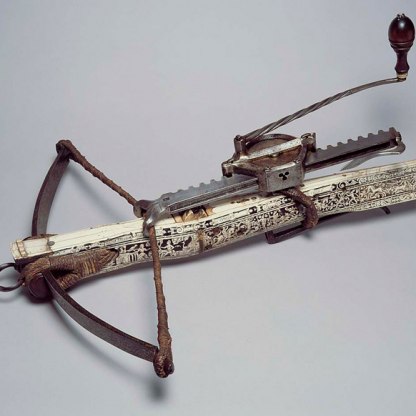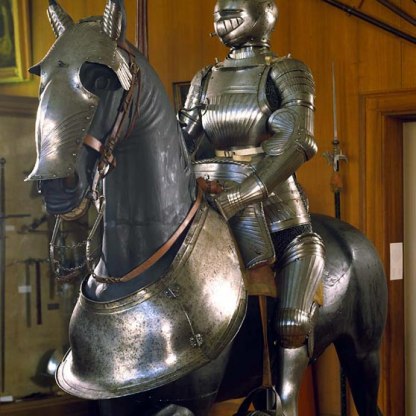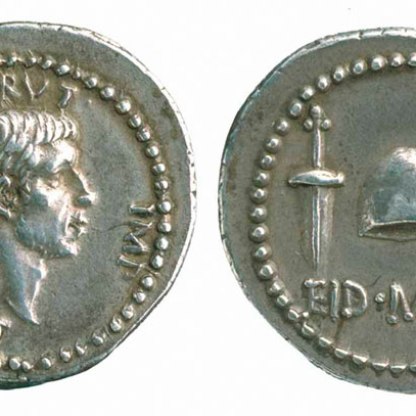Claymore

The word 'claymore' comes from the Gaelic claidheam-hmor, meaning ‘great sword'. The weapon itself is a two-handed cutting sword used in the Highlands of Scotland and by Scottish mercenaries in Ireland between the early sixteenth and the seventeenth centuries. The word later came to be used to describe the eighteenth-century Scottish basket-hilted sword.
The claymore was not the biggest of the European broadswords – a huge lethal-looking sixteenth-century blade from Switzerland or Germany in the Fitzwilliam makes it look almost tame by comparison. But it was a brutally efficient weapon, as a contemporary account of the battle of Killiecrankie, 1689, testifies.
Viscount ‘Bonnie’ Dundee’s force, loyal to the deposed James II, engaged William III’s army under Hugh Mackay at the pass of Killiecrankie near Pitlochry, central Scotland, on 16 July. By the end of the battle,
... the enemy lay in heaps almost in the order they were posted; but so disfigured with wounds, and so hashed and mangled, that even the victors could not look upon the amazing proofs of their own agility and strength without surprise and horror.
Many had their heads divided into two halves by one blow; others had their sculls cut off above the ears by a back-strock, like a night-cap. Their thick buffe-belts were not sufficient to defend their shoulders from such deep gashes as almost disclosed their entrails. Several pikes, small-swords, and the like weapons were cut quite through, and some that wore skull caps had them so beat into their brains that they died upon the spot.
This was one of the last times that the two-handed claymore was used in battle. The development of the firearm neutralised even this powerful weapon.
The sword in the Fitzwilliam is one of the few surviving examples of the ‘true claymore', and is distinguished by several features which seem deliberately intended to evoke earlier medieval war swords. The quillons – crossguards between the hilt and the blade – are angled in towards the blade and end in quatrefoils, and a tongue of metal protrudes down either side of the blade. The top of the blade is punchmarked ‘Fettes', an old Scottish name.
Themes and periods
Data from our collections database
The pommel is from a basket-hilted sword. An inscription 'AFORBES' (with the F the wrong way round) is punched (pontillé style) along one length (nothing on the other): name of previous owner?
Christie's, London, 3 March, 1949, Lot 76, vendor not named
Legal notes
Bought with the General Duplicates Fund
Acquisition and important dates
- Method of acquisition: Bought
- Dates: 1949-03-11
Dating
The claymore is a two-handed sword of a type used in Scotland from the 15th to 17th century.
The claymore, which has this very distinctive form of hilt and guard, was used in Scotland, its name said to be derived from the Gaelic for great sword, claidheamh-mor. The claymore became well known through the writings of Sir Walter Scott in the 19th century and became, along with the kilt, very strongly associated with the rise in Scottish romanticism. This, very characteristic, example has the name AFORBES (with the F the wrong way round) on one side of the blade, probably the name of a former owner.
Maker(s)
- Unknown Production
Note
The claymore is a two-handed sword of a type used in Scotland from the 15th to 17th century.
The claymore, which has this very distinctive form of hilt and guard, was used in Scotland, its name said to be derived from the Gaelic for great sword, claidheamh-mor. The claymore became well known through the writings of Sir Walter Scott in the 19th century and became, along with the kilt, very strongly associated with the rise in Scottish romanticism. This, very characteristic, example has the name AFORBES (with the F the wrong way round) on one side of the blade, probably the name of a former owner.
Place(s) associated
- Scotland
Materials used in production
Read more about this recordOther highlight objects you might like
Suggested Curating Cambridge products
Sign up to our emails
Be the first to hear about our news, exhibitions, events and more…





